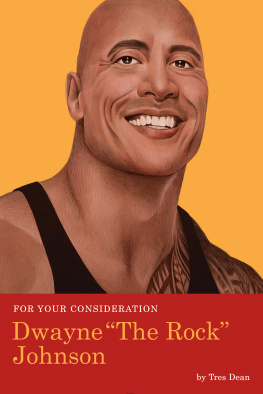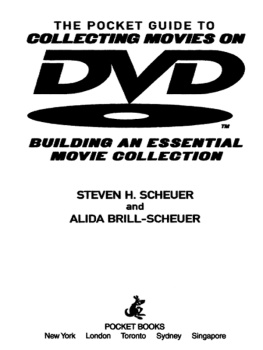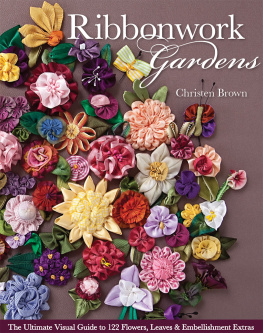
TWENTY-FIRST CENTURY WORKS
BY KERRY SEGRAVE AND FROM MCFARLAND
Extras of Early Hollywood: A History of the Crowd, 19131945 (2013)
Policewomen: A History, 2d ed. (2013)
Parking Cars in America, 19101945: A History (2012)
Begging in America, 18501940: The Needy, the Frauds, the Charities and the Law (2011)
Vision Aids in America: A Social History of Eyewear and Sight Correction Since 1900 (2011)
Lynchings of Women in the United States: The Recorded Cases, 18511946 (2010)
America Brushes Up: The Use and Marketing of Toothpaste and Toothbrushes in the Twentieth Century (2010)
Film Actors Organize: Union Formation Efforts in America, 19121937(2009)
Parricide in the United States, 18401899(2009)
Actors Organize: A History of Union Formation Efforts in America, 18801919 (2008)
Obesity in America, 18501939: A History of Social Attitudes and Treatment (2008)
Women and Capital Punishment in America, 18401899: Death Sentences and Executions in the United States and Canada (2008)
Women Swindlers in America, 18601920 (2007)
Ticket Scalping: An American History, 18502005 (2007)
America on Foot: Walking and Pedestrianism in the 20th Century (2006)
Suntanning in 20th Century America (2005)
Endorsements in Advertising: A Social History (2005)
Women and Smoking in America, 1880 to 1950 (2005)
Foreign Films in America: A History (2004)
Lie Detectors: A Social History (2004)
Product Placement in Hollywood Films: A History (2004)
Piracy in the Motion Picture Industry (2003)
Jukeboxes: An American Social History (2002)
Vending Machines: An American Social History (2002)
Age Discrimination by Employers (2001)
Shoplifting: A Social History (2001)
Movies at Home: How Hollywood Came to Television (1999; paperback 2009)
American Television Abroad: Hollywoods Attempt to Dominate World Television (1998; paperback 2013)
Tipping: An American Social History of Gratuities (1998; paperback 2009)
Baldness: A Social History (1996; paperback 2009)
Payola in the Music Industry: A History, 18801991 (1994; paperback 2013)
The Sexual Harassment of Women in the Workplace, 1600 to 1993 (1994; paperback 2013)
Women Serial and Mass Murderers: A Worldwide Reference, 1580 through 1990 (1992; paperback 2013)
Drive-in Theaters: A History from Their Inception in 1933 (1992; paperback 2006)
Extras of Early Hollywood
A History of the Crowd, 19131945
KERRY SEGRAVE

McFarland & Company, Inc., Publishers
Jefferson, North Carolina, and London
LIBRARY OF CONGRESS CATALOGUING DATA ARE AVAILABLE
BRITISH LIBRARY CATALOGUING DATA ARE AVAILABLE
e-ISBN: 978-1-4766-0215-8
2013 Kerry Segrave. All rights reserved
No part of this book may be reproduced or transmitted in any form or by any means, electronic or mechanical, including photocopying or recording, or by any information storage and retrieval system, without permission in writing from the publisher.
Front cover image: Crowd/Brand X Pictures/Thinkstock
McFarland & Company, Inc., Publishers
Box 611, Jefferson, North Carolina 28640
www.mcfarlandpub.com
Preface
This book looks at the subject of the lm extra during Hollywoods golden era ending, for the purposes of this book, in 1945. While the atmosphere players far outnumber the stars, the supporting cast, the character actors, and so forth, they never got much attention.
Of course, they were and are important in motion pictures. A few weeks before I wrote this preface I watched a showing of the 1942 cult movie Cat People. The guest host on Turner Classic Movies introducing the movie mentioned it had been made on a very small budget. Specically he pointed out the lack of extras in some of the street scenes (set in New York). Despite the fact some of those scenes were set in Manhattan in the daytime there were hardly any people on the streets, outside of the principals, signifying the budget for the lm was so small as to preclude the hiring of even a sufcient number of atmosphere people. Extras, like music, can inuence the perception of a lm and its enjoyment. Too much of the latter can undermine, overwhelm, and weaken a lm, as can too little of the former. Like a Rodney Dangereld character, extras get no respect.
Research for this book was mostly done online at the University of British Columbia in Vancouver and at the Vancouver Public Library in Vancouver, British Columbia. Most useful were the online databases covering the newspapers of the rst half of the 20th century, mostly accessed through Proquest. Also useful was the online database newspaperarchive.com. As well, the show business trade publications provided the greatest amount of material, Variety much more so than Billboard.
Introduction
For the purposes of this book, the term lm extras refers to persons who were used by the major lm studios, also known as the lm cartel, the majors, or the Motion Picture Producers and Distributors Association of America. Over time that cartel, which formed in 1922 (earlier lm cartels existed), has undergone a number of name changes and exists to this day. Today it is the Motion Picture Association of America. For the purposes of the book and more in keeping with its earlier name, it will be referred to herein as the MPAA. The MPAA functioned as the Hollywood lm industry lobby group and was often referred to as the Hays group or Hays organization, in honor of its rst head Will Hays, the so-called czar of the motion picture industry. The lm cartel consisted of eight to ten member rms over the years covered by this book, and included all of the best known and most highly visible of the lm producers: Warner Brothers, Columbia, Universal, Paramount, RKO, MGM, United Artists, and 20th CenturyFox. Something on the order of 85 percent of all the extras used in motion pictures in Hollywood were employed by the majors. For extras and would-be extras there was, effectively, no other game in town.
Chapter 1 looks at the general conditions in the industry, including some glimpses into the lives of extras. Private employment agencies were involved in the early years of the industry and extracted large commissions from the extras as well as imposing other abuses on them. These led to increasing complaints from the atmosphere players and generated governmental investigations into the situation. Those went far enough to lead to government regulations regarding the use of females and minors as lm extras.
Chapter 2 explores the Central Casting Bureau, its origins and formation. Those governmental probes mentioned in chapter 1, and the fear of further regulatory intrusion into the industry, were the main reason for the lm cartel to organize Central Casting. Also explored herein are the struggles Central had with the registration of extras as well as mention of the three heads of Central through 1945Dave Allen, Campbell MacCulloch, and Howard Philbrick, with each of the rst two men leaving the post under a cloud.
Chapter 3 deals with morals and corruption in the extra eld, mainly the sexual harassment of the female atmosphere players. The practice was likely much more pervasive than could be found reected in the media accounts. The period covered by this book was a time before the phrase was used and at a time when women were supposed to bear such assaults in silence. However, several allusions in some articles indicated a likely widespread problem.
Next page
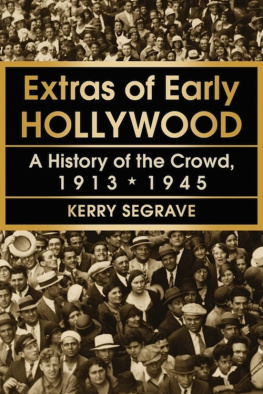
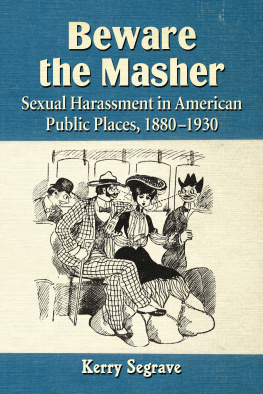
![Andrea Hest - Snow Day [Touchstone: Extras]](/uploads/posts/book/874298/thumbs/andrea-hest-snow-day-touchstone-extras.jpg)
![Andrea Höst - In Arcadia [Touchstone: Extras]](/uploads/posts/book/807155/thumbs/andrea-h-st-in-arcadia-touchstone-extras.jpg)
![Andrea Höst - Gratuitous Epilogue [Touchstone: Extras]](/uploads/posts/book/726705/thumbs/andrea-h-st-gratuitous-epilogue-touchstone.jpg)

